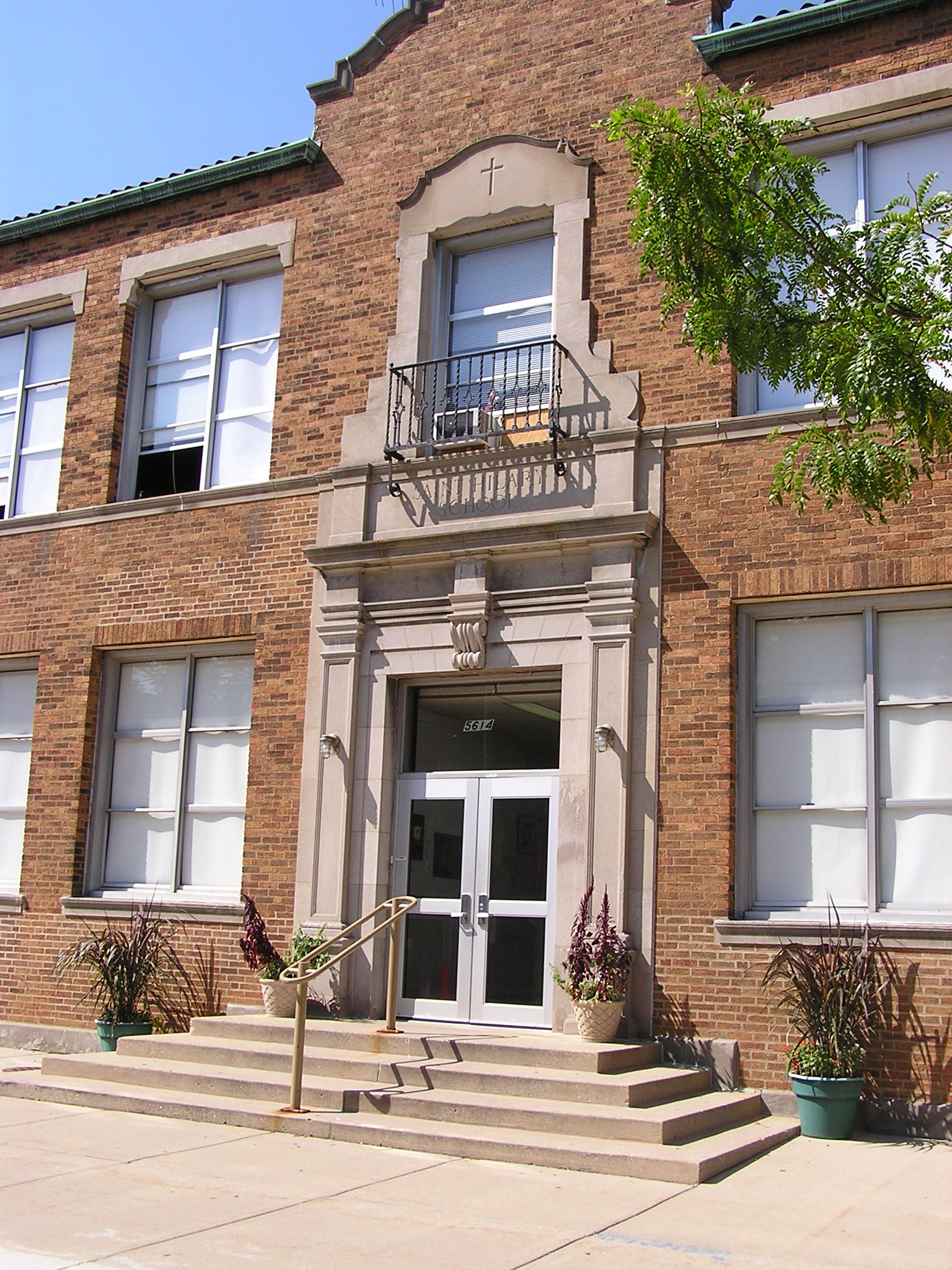 School History
School History
The St. Hilary parish campus is situated in the heart of Budlong Woods. The area bounded by Western on the east, Peterson Avenue on the north, the North Branch of the Chicago River on the west, and Foster Avenue on the south, was originally the wooded area of the Budlong brothers' farm. The Budlong brothers developed their farm into one of the largest truck garden farms in the Chicagoland area. The farm gained its fame as the home of the Budlong pickles. With the spread of the city, the farm was sold. A golf course was started in 1921, but it soon gave way to land developers and their success is evidenced by the residential area now in the geographical limits of the parish.
Mr. and Mrs. Frank Annen, who moved into the subdivision in 1919, found that they were part of St. Ita’s parish. At that time, they had to take a streetcar with three transfers to attend Mass on Sunday. In the next 7 years, 200 families were living in the area, and after many requests, the announcement was made that a new parish would be established – consisting of Arcadia Terrace, Peterson Woods, and Budlong Woods.
On the first Sunday of May, 1926, the first Mass for St. Hilary Parish was celebrated with about 150 people in attendance. The church was a portable structure procured from St. Timothy’s parish and was located on Lincoln Avenue between California and Fairfield. So began the life of Chicago’s 245th parish.
In April of 1928, the construction of a building began which would serve as a school and a temporary church. On November 12, 1928, one hundred and thirty two students were admitted to St. Hilary School and the Benedictine Sisters of St. Scholastica taught them. There were three nuns teaching and one nun as principal. In 1931, St. Hilary Parish School sent forth its first graduating class of ten boys and ten girls. The original school housed the nuns on the second floor of the school building. In 1934, the school became too small for increased enrollment. The twelve rooms in the building were all needed for classrooms. During the next six years, a new convent and rectory were built.
During the 1950s, the pastor began the acquisition of land on Bryn Mawr Avenue. With cooperation of the City of Chicago, the “alley” parallel to Bryn Mawr Avenue was also acquired. The pastor convinced the parishioners that a separate church building could be a reality. Within five years of ground breaking, the “new” church was debt free. Approximately $750,000 was given by the people of St. Hilary, the total construction costs of their new church. On April 21, 1956, the last Mass was said in what was referred to as the “old church” (now the gym). The first Mass in the new church was said 30 years and one week after the First Mass was offered in the portable chapel on Lincoln Avenue. Cardinal Stritch dedicated the new church on June 10, 1956.